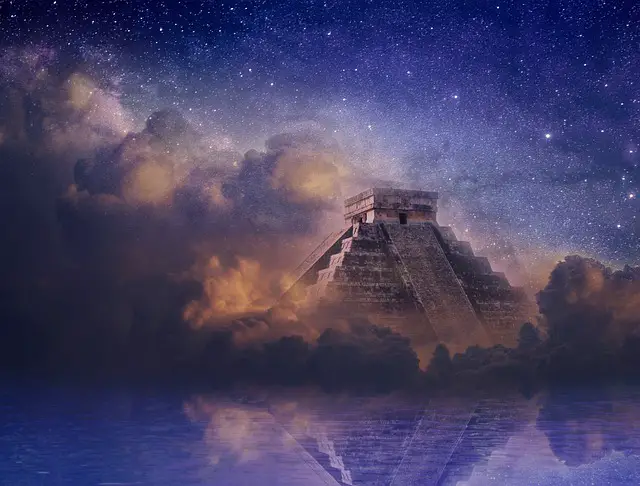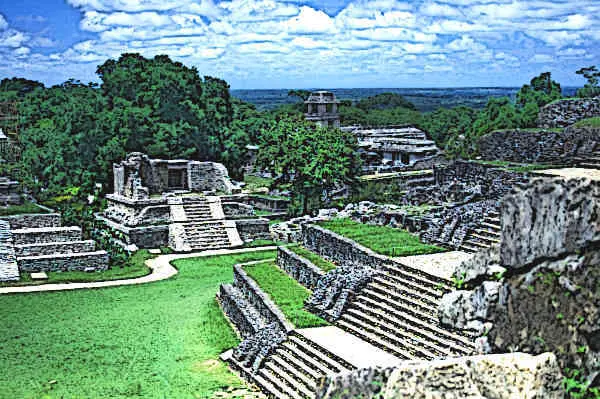
Maya cities were meticulously planned, featuring well-defined layouts and architectural harmony. They were designed with consideration for celestial alignments and sacred geography, reflecting the Maya’s deep connection to the cosmos.
“Mayan cities were architectural masterpieces, adorned with intricate carvings and towering pyramids that showcased the advanced engineering skills and artistic sensibilities of the Maya civilization.”
Dr. Elizabeth Graham, Mayan archaeologist and historian.
Maya cities boasted magnificent pyramids and temples that served as focal points for religious and ceremonial activities. These structures, often adorned with intricate carvings and sculptures, showcased the Maya’s architectural expertise and their devotion to their gods.
Maya cities implemented advanced water management systems to address their water needs. They constructed reservoirs, canals, and aqueducts to capture, store, and distribute water, ensuring a reliable supply for agriculture and everyday life.
Maya cities featured observatories and astronomical alignments. These structures allowed the Maya to study celestial movements and accurately track celestial events, enabling them to create precise calendars and deepen their understanding of the universe.
In addition to monumental structures, Maya cities had residential palaces for nobles and ruling elites. These palaces, often lavishly adorned, served as the residences of the ruling class and centers of political power.
Maya cities commonly had ball courts where an ancient ritualistic ball game was played. These ball games held significant religious and political symbolism, and winning or losing could impact the city’s fate or serve as a form of divination.
“The Mayan cities were not merely centers of political and religious power, but also vibrant urban spaces with bustling marketplaces, residential areas, and intricate systems of water management. They were truly remarkable in their urban planning and cultural complexities.”
Dr. David Freidel, Mayan archaeologist and anthropologist.
Maya cities were adorned with elaborate carvings and vibrant murals. These artistic creations depicted scenes from mythology, religious rituals, historical events, and daily life, providing a glimpse into the cultural, social, and artistic practices of the Maya.
Maya cities served as vital trade and commerce hubs, facilitating the exchange of goods, ideas, and culture. Their strategic locations along trade routes allowed for the flow of valuable resources, including jade, obsidian, textiles, and cacao.
The central plaza formed the heart of Maya cities, serving as a gathering place for ceremonies, celebrations, and public events. It was surrounded by important civic and religious structures, reinforcing the city’s social and cultural fabric.

The architectural achievements of Maya cities influenced later Mesoamerican civilizations. Their distinct architectural style, characterized by stepped pyramids, intricate ornamentation, and symbolic representations, served as a foundation for architectural developments in subsequent cultures.
The Maya cities stand as testaments to the ingenuity, cultural richness, and sophisticated urban planning of the Maya civilization.
With their awe-inspiring structures, advanced water management systems, and celestial alignments, these cities provide a window into the remarkable achievements and beliefs of the Maya people.
Exploring their cities allows us to unravel the mysteries of their past, appreciate their artistic and architectural mastery, and gain a deeper understanding of the fascinating world of the Maya civilization.
“The Ancient Maya City of Tikal” by William R. Coe
This book offers a comprehensive exploration of the ancient city of Tikal, one of the most significant Mayan urban centers. With detailed descriptions and illustrations, Coe takes readers on a captivating journey through Tikal’s history, architecture, and cultural significance.
“Palenque: Eternal City of the Maya” by David Stuart and George Stuart
Focusing on the majestic city of Palenque, this book provides a deep dive into the urban planning, iconic structures, and intricate artwork of this renowned Mayan city. The Stuarts’ expertise brings Palenque’s history and significance to life.
“Copán: The Rise and Fall of an Ancient Maya Kingdom” by David Webster
Webster’s book explores the fascinating rise, flourishing, and eventual decline of the Mayan city of Copán. It offers insights into the political, cultural, and artistic achievements of this influential urban center.
“Uxmal: A History of the Ancient Maya City” by Nicholas D. Hopkins
Focusing on Uxmal, Hopkins provides a comprehensive study of this remarkable Mayan city. The book covers Uxmal’s architectural wonders, cultural practices, and historical context, shedding light on the significance of this urban center.
“Maya Cities: Placemaking and Urbanization” edited by George J. Bey and Christopher A. Pool
This collection of essays explores various aspects of Maya cities, offering interdisciplinary perspectives on urbanization, architecture, governance, and societal dynamics. It provides a broader understanding of Mayan urban centers through the contributions of multiple scholars.
These five books provide valuable insights into the history, architecture, art, and cultural significance of Mayan cities. Whether focusing on specific urban centers or taking a broader perspective, they offer a comprehensive exploration of the fascinating world of Mayan civilization.